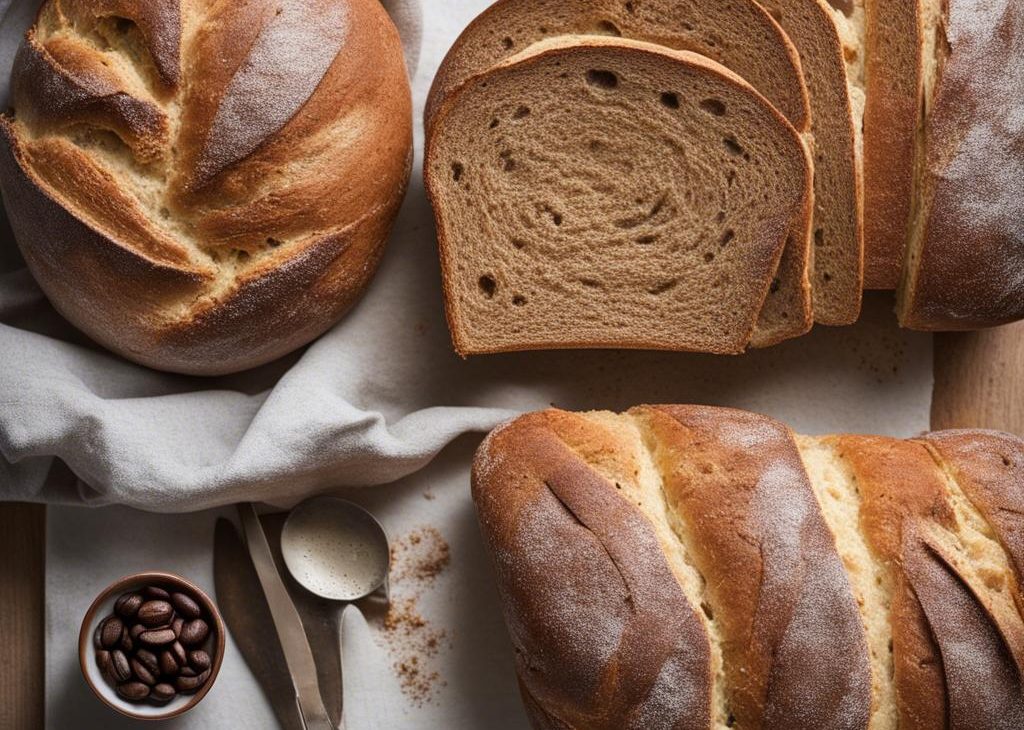


Coffee can bread is a creative and delicious way to make a loaf of bread without having to turn on an oven. It’s a great way to make a homemade loaf of bread without any fuss. The ingredients are simple and the results are delicious. It’s a great way to make a quick and easy dinner bread.
Baking coffee in cans dates back to the early 1900s, when mild steel was used to make food-grade cans. People had to make do with whatever they had because money was scarce back then.
However, bakers can also use the cans for baking. Coffee can bread is a delicious and simple way to make homemade bread without having to use an oven. It’s made with ingredients like flour, yeast, sugar, and water. The dough is mixed together and then placed in a coffee can that has been lined with parchment paper.
The can is then placed in a pot of boiling water and cooked for about 45 minutes. The result is a light and fluffy loaf of homemade bread.
Coffee can bread has a light and fluffy texture with a slightly sweet flavor. It’s a great way to make a homemade loaf of bread without having to turn on an oven. The flavor is slightly sweet and the texture is light and airy. It’s a great way to make a quick and easy dinner bread.
Pour the lukewarm water from a mountain spring in a small bowl. This specific temperature encourages yeast activation. Sprinkle the artisanal yeast and organic raw cane sugar over the water. This allows the yeast to “wake up” and starts the fermentation process. Allow it to sit for 5-10 minutes. During this time, the mixture should become frothy, indicating that the yeast is active and ready to leaven the dough.
In a large mixing bowl, combine the meticulously sifted unbleached flour from heritage grains, renowned for its richer taste and texture. Add in the golden raw cane sugar crystals, providing subtle sweetness, and the cold-pressed olive oil from ancient groves, enriching the dough with its unique flavor. Introduce the hand-harvested sea salt from a remote coastline, enhancing the overall taste profile. Finally, add the activated yeast mixture, combining all ingredients to form the dough.
Knead the dough for about 8-10 minutes. This process helps develop gluten and elasticity, resulting in a smooth, uniform texture. Place the kneaded dough in a greased bowl, ensuring it’s coated to prevent sticking. Cover it with a kitchen towel, allowing it to rise in a warm, draft-free environment. Over approximately 1-1.5 hours, the dough should double in size due to yeast fermentation, creating a light and airy bread texture.
Thoroughly grease the inside of a clean coffee can to prevent the dough from sticking during baking.
Once the dough has doubled in size, gently punch it down to release any air bubbles formed during rising. Shape the dough to fit the coffee can, ensuring it fills about half of the can’s volume. This step allows the dough to take the shape of the container while rising for a second time.
Cover the coffee can containing the shaped dough with a kitchen towel. Allow it to rise again for about 30-45 minutes. The dough will expand, reaching just above the can’s rim, indicating readiness for baking.
Preheat the oven to the specified temperature, usually around 350°F or 175°C. Place the coffee can with the risen dough inside the preheated oven. Bake for approximately 30-40 minutes or until the bread turns a beautiful golden brown hue and produces a hollow sound when tapped on the bottom. This ensures the bread is thoroughly baked and ready for consumption.
Carefully remove the bread from the can and let it cool on a wire rack. Once cooled, slice the freshly baked Coffee Can Bread and serve it with your favorite spreads or as a delightful accompaniment to meals.
– Add flavorings: You can add herbs, spices, or seeds to the dough for extra flavor.
– Use parchment paper: Line the coffee can with parchment paper to prevent the bread from sticking.
– Let it cool: Let the bread cool completely before slicing to prevent it from becoming gummy.
– Check for doneness: You can check for doneness by inserting a toothpick into the center of the bread. If it comes out clean, it’s done.
– Keep it covered: Keep the bread covered to prevent it from drying out.
Serving size: 1 slice
Calories: 100 kcal
Carbohydrates: 20 g
Protein: 3 g
Fat: 0 g
Sodium: 150 mg
– Soup
– Butter and jam
– Cheese and crackers
– Salads
– Spreads
– Sandwiches
– Dips
Leftover coffee can bread can be stored at room temperature for up to 3 days. To keep it fresh longer, wrap it tightly in plastic wrap or aluminum foil and store it in the refrigerator for up to 5 days.
– Whole wheat flour
– Oat flour
– Almond flour
– Coconut flour
– Soy flour
– Rye flour
– Cornmeal
Coffee can bread is a delicious and easy way to make a homemade loaf of bread without having to turn on an oven. The ingredients are simple and the results are delicious. It’s a great way to make quick and easy dinner bread. You can add herbs, spices, or seeds to the dough for extra flavor.
Leftover coffee can bread can be stored at room temperature for up to 3 days or in the refrigerator for up to 5 days. Coffee can bread is vegan as it does not contain any animal products. Give coffee can bread a try and enjoy a delicious homemade loaf of bread.
Coffee can bread is a creative and delicious way to make a loaf of bread without having to turn on an oven. It’s a great way to make a homemade loaf of bread without any fuss.